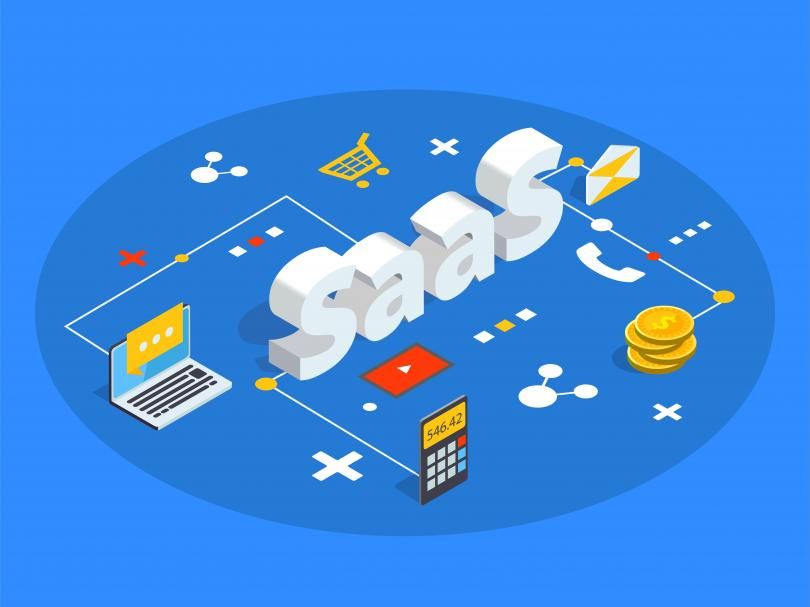SaaS Metrics.
What Are SaaS Metrics? 10 Important Metrics to Track
SaaS Metrics Definition
SaaS (software-as-a-service) metrics are benchmarks that companies measure in order to establish steady growth. Like traditional KPIs, SaaS metrics help businesses gauge the success of their organization and effectively prepare themselves for a stable economic future.

What Are SaaS Metrics?
SaaS metrics refer to the important data points that software-as-a-service companies look at to determine growth and progress. These metrics often include annual recurring revenue, customer acquisition cost and customer churn. For SaaS founders, future growth is the ultimate goal, and it’s one that can only be achieved by implementing an effective business strategy based on growth metrics.
What Are SaaS Metrics?
SaaS metrics are tailored to meet the needs of sales, marketing and customer success. These three components of the SaaS engine are inextricably linked. For SaaS companies, harnessing the power of the three is the central challenge, and it requires careful calculation of SaaS analytics to accurately determine the efficacy of each.
Unlike businesses that financially rely on immediate, one-and-done sales, SaaS businesses — which are subscription based, by nature — are more concerned with the entire customer lifecycle. In the SaaS realm, customer retention is tantamount to financial growth. In this sense, it is not enough to merely attract customers. In fact, the greatest financial gain comes from establishing long-term customer relationships, as recurring revenue is key to continuous growth.
10 Important SaaS Metrics and What They Mean
Popular SaaS Metrics to Track
- Customer Churn
- Activation Rate
- Conversion Rate
- Burn Rate
- Customer Lifetime Value (CLV)
- Customer Acquisition Cost (CAC)
- LTV/CAC Ratio
- Monthly Recurring Revenue (MRR)
- Net Promoter Score (NPS)
- Annual Recurring Revenue (ARR)
Customer Churn
Considering SaaS companies rely heavily on subscription services, customer churn is a primary concern. Customer churn refers to the measurement of customers or accounts that drop a business’ services within a given period of time. By determining the churn rate, SaaS companies can gain a deep understanding of how and when customers interact with their product, which enables them to form better retention strategies. Once a customer leaves a company’s services, the race to attract and retain a new one begins. It is critical for scaling companies to determine customer churn rate, as it provides deeper insight into the overall health of the business.
Activation Rate
Activation rate reveals what specific steps users take when they discover the value of a company’s product. For example, if a user downloads a ride-sharing app, the product is only activated once that user books their first trip. Once this has occurred, the user has unlocked the value of the company’s product. The company can then delve further into the user journey, which enables them to optimize the user experience for other customers. By determining important aspects of how users engage with a product, the company can shorten the time it takes users to harness the value of their product.
As an indication of user interaction, activation rate is a direct measure of the success of a product, making it a vital metric for SaaS businesses. Considering many users fail to re-engage with a software service once a free trial has ended, it is up to companies to decide how to keep customers interested in their product.
Conversion Rate
Conversion rate measures how many visitors are converted into actual customers. For SaaS companies, there are a number of other conversions to keep an eye on, such as how many users taking advantage of freemium or trial period options become paying customers or subscribers.
To calculate conversion rate, divide the number of subscribers or customers gained over a certain period by the total number of visitors or freemium/trial users during that same period. This common SaaS KPI can tell a company that it needs to take a step back and determine where it’s losing users. For example, a low conversion rate could be largely a result of poor website performance, such as slow loading that deters users or navigation that isn’t user friendly.
Burn Rate
Running out of cash is one of the biggest challenges fledgling SaaS companies face. By determining how a company spends its cash supply over a period of time, investors can then gauge how much time there is left before a business runs out of capital. In order to determine the burn rate, companies can view their cash flow statement, which highlights any changes in cash position from one period to the next. In order to ascertain how much money is being lost on a monthly basis, a company can calculate the net burn rate by using the following formula:
Cash amount / monthly operating expenses = net burn rate
It is important for a growing SaaS company to remain mindful of their burn rate, as it informs investors and venture capitalists regarding how much funding they should allocate to that business. Since securing solid funding is essential to the upkeep of a new business, deciphering the burn rate is one of the most important aspects of running a SaaS company.
Customer Lifetime Value (CLV)
Considering SaaS companies focus heavily on the entire customer lifecycle, calculating the economic impact of each customer account is another vital metric. The customer lifetime value (CLV) refers to the projected total revenue generated by a customer over the course of the lifetime of their account. Naturally, the longer a customer continues to use a company’s product, the greater their lifetime value will be. This can be calculated using the following formula:
Customer value x average customer lifespan = CLV
By calculating the customer lifetime value, companies can predict how profitable a customer will be long-term, which gives them an idea about how to readjust their engagement strategies.
Customer Acquisition Cost (CAC)
Customer acquisition cost enables companies to determine how much money they spend on attracting new customers, taking into account marketing, sales and other costs. For SaaS companies, it is important to make sure that the cost of acquiring customers does not exceed the amount of money generated by them. The following formula can be used to calculate exactly how much money a company spends on customer acquisition:
Total cost of sales and marketing / number of acquired customers = CAC
By measuring the amount of money spent on attracting customers, companies can then formulate the most cost-effective acquisition strategy.
LTV/CAC Ratio
The LTV/CAC ratio is a comparison of a customer’s lifetime value versus the cost of acquiring them. This metric is a way to determine whether the value a company has gained from its customers over time is greater than, equal to or less than what it spent to bring them on board. At minimum, SaaS companies need to be breaking even on this metric, but the goal is to see a ratio around 3:1 that shows their efforts to retain customers are paying off. This SaaS analytic is calculated by first using the methods above to figure out customer lifetime value and the cost of acquisition and then simply dividing the former by the latter.
Monthly Recurring Revenue (MRR)
Monthly recurring revenue (MRR) tells companies how much revenue their customers are generating over the course of a month. In the SaaS realm, this amount of projected new revenue can come from either new sales or existing business expansions.
Annual Recurring Revenue (ARR)
Similar to MRR, annual recurring revenue (ARR) reveals how much revenue a company generates over the course of a year. Both ARR and MRR offer organizations insight into the financial well-being of their business and its collective progress.
Net Promoter Score (NPS)
The Net Promoter Score (NPS) enables companies to assess the loyalty of their customer base. This type of metric allows companies to quickly determine how their customers feel about their product. Companies often measure NPS through the use of simple survey questions, which usually address consumers’ willingness to reuse a product or recommend it to someone else. For young SaaS businesses, this metric is especially useful, as it allows organizations to make any needed adjustments to their product or services early on so they can keep growing their customer base.
How SaaS Metrics Are Tracked
For SaaS companies, staying afloat within an increasingly competitive industry requires careful planning and meticulous calculations. Without a sound strategic roadmap, businesses can quickly lose sight of their primary focus, which is to build a robust organization that can weather challenging setbacks. While calculating benchmarks may seem like a daunting task, there are numerous technologies designed to help businesses measure their performance.
Choosing the right set of software and tools to keep track of an SaaS company’s most powerful metrics should take into account several factors, like the company’s size and the nature of its products. Organizations should also consider what other programs its teams already use that may need to integrate with an analytics platform so that operations run smoothly, rather than becoming more cumbersome.
Most importantly, companies need to think about the purpose the analytics are supposed to serve. Some solutions provide more of an emphasis on insights about online user behaviors, while others are geared more toward examining fluctuations in and the health of data around subscriptions. It’s necessary for SaaS companies to understand what questions they’re trying to answer before committing to an analytics tool.
SaaS Metrics Companies
There are plenty of players in the field of SaaS analytics. These companies provide the software and other tools that enable companies to measure key metrics and track them over time. Their products and services are critical for getting a reading on how well a company is performing in the present moment, as well as building a strategy for a solid economic future.
Software such as Tableau, which is owned by popular CRM software company Salesforce, enables organizations to more closely interact with their data so they can make informed decisions that can potentially affect the future of their organization. By taking a deep dive into their data, organizations can more easily adapt to market needs, building up a competitive advantage.
A similar option is Google Analytics, which companies can use to collect anonymous data about website users, such as whether they’re on a mobile device or which browser they’re using. That data can then be sorted and filtered into reports that provide various business insights, like analysis of how much money is being generated through website subscriptions.
There’s also Baremetrics and Chartmogul, both of which provide subscription analytics and insights. For example, Chartmogul can track changes in subscriptions over time to anticipate potential churn, and Baremetrics’ features include the ability to schedule analytics reports to be regularly delivered to users via email.














